#compare her life to literal segregation
Explore tagged Tumblr posts
Text
My biggest issue with the Zombies franchise is that they had the queer coded mentally ill teenager who is later revealed to be part of the autistic coded minority group be the main antagonist instead of like, the principal or something.
#also that they had Addison#who's experience is honestly pretty similar to mine as a white autistic teenager in the 2020s#compare her life to literal segregation#which is not. is not good.#*sigh* see this is why I said that interpretation of the zombies being disabled people would've been way better...#also! to clarify!#you can have autistic villains#you can have mentally ill villains#you just need to separate their mental illness from their villainy#which zombies at no point even tries to do#zombies#disney zombies#z-o-m-b-i-e-s#zombies re animated#bucky buchanan
28 notes
·
View notes
Text
obviously the entire concept of the x men universe is based on being a barely even veiled metaphor for discrimination. it can easily be compared to the civil rights movement, with xavier and magneto corresponding to mlk and malcom x and all that, and the clear plot points about segregation and slavery and general racism. but theres also many comparisons that people have made to some mutants being an allegory of homophobia.
one of my favorite plotlines in both the cartoons and the movies is the personal conflict some mutants face when offered the "cure" for their powers. i always thought it was super interesting to see the mutants who had always fought for equality and acceptance to be drawn to the concept of not having to fight for that anymore. like rogue, who was one of the most powerful x men, especially in the comics and the '92 cartoon. she was crazy powerful in so many ways, but was the one of the only ones drawn to the cure because of the side affects of her powers that took away a huge life experience for her.
anyway what im trying to say is that i think the difference of opinions between different mutants on how they should interact with the "normal" members of society, and how those opinions correspond almost directly with the discriminatory consequences of their mutations, is a really good analogy for the intersectionality between racism, homophobia, and transphobia.
If we look at characters whose mistreatment can be compared to racism, we have people like mystique and nightcrawler. they both have physical differences that clearly set them apart from the majority and subject them to judgement. raven especially has her whole arc in the movies about whether or not to live life unashamed in her natural form, or continue using her own energy to make herself more palatable for others. Comparing this to people of color consciously or subconsciously whitewashing themselves to fit in makes a lot of sense.
but then we have the homophobia element. characters who's powers aren't visible on the surface, but are still an integral part of who they are. asking them to hide their powers is like for others convenience is discriminatory, despite the good intentions that many of their human counterparts may have (think of bobby's mom asking if he's "tried not being a mutant" in x2) and rogue having a physical and romantic disconnect from all of her peers because of her powers.
and theennnnn we have the transphobia analogies, which i connect to the characters that have physically visible powers but are still able to hide them from society. this would be people like angel (he literally BINDS his wings like c'mon) and beast before the serum shit turned him blue and he just had weird feet. with those people, embracing their powers would have really cool benefits for them, like flying and shit, but its easier for them to hide it because of society's discrimination.
anyways this is a really long winded way of saying that thats part of the reason why the political dynamics of the x men is still so relevant and important and interesting. relationships like erik and charles are so much deeper from this pov, bc you have the group of people who see the hope and humanity in people and want to have everyone treated as equals (the x men) and you have the mutants who retreat into their own community and don't want the acceptance or the cooperation of regular society because if they're always going to feel "other" why not build a new society to erase that feeling (the brotherhood).
if i could write essays on this shit for school i would be acing all the humanities, trust.
37 notes
·
View notes
Note
How's Evan in your au?
Doing ok for the most part. Could be better but he's not feeling god aweful. New York was still fairly racist in 1912 but a far cry from the Jim Crow South.
According to the Tuskegee institute, there's only one reported lynching of a black person from the 1880s-1960s. (That's not to say that racial violence of other sorts didn't happen or that unreported lynchings didn't happen, just shows how compared to the South, where people literally had little festivals around lynchings at times and sent postcards about it, hate crimes were generally looked down upon and well...considered crimes) and he has the added benefit of being from a wealthy family that didn't come from an enslaved background. Because Ororo is a recent expat from egypt canonically, so is his family. They run an import/export transport business to the United States which is why they are living there at all. Granted that makes the racism he sees very very obvious to him compared to how he used to live, but the status helps avoid some of the worst of it by avoiding a lot of the financial barriers that prevented black people from escaping poverty and segregation. Segregation in New York, while there, was more financial barrier focused. A lot of places up north had laws against segregation in schools after the civil war, but segregation was often enforced via redlining and such. Cost of living, job prospects, school funding, etc, ect ect. Jim Crow laws didn't start reaching the north in a big way until after wwI.
So cause he comes from money he's able to attend the same school as his friends. He...is not too fond of the kids there and does not fully trust them. They are harmlessly ignorant at the best of times and he doesn't want to get to know them enough to see them at the worst of times. They have a nasty habit of talking down to him and certainly don't act like he's their equal, despite the fact that he is more well traveled and can speak more languages than any of them. (Evan knows French, Arabic, Swahili ,and English in this AU) So he mostly sticks with the institute kids...who absolutely adore him and will not let anyone give him shit. They will avoid places that do segregate to the best of their abilities (you can only avoid public restrooms so much in an emergency), step up to anyone saying something they don't like to him, and generally have his back no matter what, particularly rogue and gambit, who know exactly how bad treatment of black people can get in America at the time. Rouge has basically adopted him as a second little brother at this point, despite him being only a few months younger than her, and as a result, Kurt has also practically physically attached himself to evan. Gambit and Scott both have a no questions asked ride pass for Evan if he needs to go anywhere, Kitty and Evan have bonded over their own shared struggles, and the teachers especially storm have his back no matter what.
He does have some friends outside the institute he plays baseball and basketball at the YMCA and goes on bike riding trips and has made some friends that way. Life isn't easy but he's finding ways to make the best of it.
Also despite their rivalry, or maybe because of it, as of late he's been seeing Pietro a little bit in private to....have chats with him. Friendly ones. Alone. .... I am a sucker for Rivals to lovers okay.
Just to make sure we're all clear I don't want to try and whitewash history, this was not the average experience for black people, even in New york. They experienced a lot of awful shit. I just really like Evan as a character and know how shitty this time could be for black people so I'm giving him the best opportunities I can given in the period. Because Evan deserves the best and he doesn't get enough love in this fandom as is. If anyone has better historical knowledge and would like to critique me on this, particularly black life in New York state at the time, please feel free to I am open to listening because this is not a subject that I am the most knowledgeable on.
#evan daniels#spyke#x men evolution#evan x pietro#pietro maximoff#mod talks#hello stranger#turn of the century au#scott summers#kitty pryde#kurt Wagner#rogue#gambit#remy lebeau#anna marie darkholme#tw:historical realism#tw:racism#ororo monroe
7 notes
·
View notes
Text
Under the cut is the updated Light Plague lore and also me critiquing humanity in the process
but of course, all deep dives of TLP will have discussions of varying degrees of body horror so be warned. Also it's so fucking long
Place is set somewhere in Europe but the apocalypse got so bad that no one can recognize what it was anymore. Even in near extinction of the human race, these assholes are still trying to segregate each other by groups, some bunkers, some labs, some towns and one is a living mansion on top of a tower wrapped in a garden of corpses surrounded by a wall. So TLP's camera or main focus would be four of the "Scorchers" in a bunker called Palethos. Scorchers are literally people who can be told to do whatever, so scientist, mercenary, assassin, resource gatherer, labrat etc. Human for hire basically and it's seen as a high honour to be one but it isn't. Four of them, Mortimer Tacre, Tak the Oracle, The Plague Kiwi, and Cobalt Roussel are the main focus of the theoretic show. Each of them represents a type of unfortunate person in the real world. Cobalt is the people pleaser who only does it because it's the safest thing to do, not once did he ever had a choice of his own, then PK who has been through tragedy after tragedy that he doesn't believe good exist anymore so why should he now, Tak, one of the smartest people that everybody goes to when they need something from them but would shun them otherwise, and Morter, who has never felt true satisfaction in his life but he came to terms with what was never meant to be so he uses what is left of his time to give the younger ones the happiness he never had.
Their jobs mainly is to play security guard for Palethos and data gatherers for 131, the establishment that protects Palethos. Other than tending to the survivors in Palethos, they should also protect them from the aggressive neighbours and mutations which they all call Dallums. Now here's the main course of TLP. The whole thing with the mutations and their miracle medicine, Chlerocyte.
Chlerocyte is a fungus found within a species of warm blooded cave fish that was discovered at the same time in the arctic. It develops in extreme cold and grows in warmth. The fungus attaches itself to the fish and they have a symbiotic relationship for the fish will provide the needed warmth for the fungus and in return, near immortality. Chlerocyte developed in a way that it will remember the body's average state of health or ideal state and reverts any damage if exposed to sunlight. wounds, lost limbs, impaled organs, brain damage, anything can be cured by it. A dying fish could just so easily swim out the vents and heal instantaneously . However, hubris is a tale as old as time. The fact that it's so easy to harvest without any hard method of applying to humans means that people will get arrogant and reliant on it to the point that even the smallest bruise is a call for Chlerocyte. Overusing and abusing the fungus/drug will warp when it should be active. They are supposed to be activated when there is abnormalities in the body. Compared to the fish that stays in the dark, humans are always exposed to the sun. Let the Chlerocyte wait long enough and it will start to "fix" something because getting activated with the sun is telling itself that the body needs it to do something, anything. And so, Dallums everyone.
Each mutation differs from how the mutated is harmed, their imperfections and sometimes what they touch. One of them was a near sighted man with a lithe frame so the fungus took it as a need to give him eyes all over his body and make his muscles swell. One Dallum was a woman nearly losing her life birthing a dying baby so the mutation gives her a flesh sack full of nutrients in an attempt to keep both her and the child alive, it worked but it's so heavy and the baby mutated with the forming of the sack so now it's part of it as a horrendous lump. Another Dallum, a gargantuan one even, was formed during a stageplay, one of the actors started to mutate and whoever he was touching became part of him and the dragon puppet he was leading with. The Dallum acts like a giant worm that constantly sings, the people it eats will merge halfway but not completely so those people retain their intelligence and memories but they are immobile so all they can do is scream to provide the Dallum's voice. Me designing the Dallums is like, I gotta make them compete with each other, they all have to be equally fucked up or gradually gets more and more fucked up. I mean one of them has his head shoved in a deer's ass and another's skin have so much fish attached to it.
The thing with Chlerocyte is simultaneously "fuck around and find out" and "play stupid games, win stupid prices" but also a jab that such a precious thing can be corrupted so badly but this time, the person who abused it is getting dragged with it.
no yeah, there's nothing anyone can do to revert Chlerocyte because according to it, what it does to the body is already perfect and it's making sure no one tampers with it. AKA you can't kill them and you can't just remove the spores and fungus unless you wanna be the ext Dallum in the files.
Anyway, survivors are at war with the Dallums while also at war with each other. At least most of them but not all. Their common enemy are the rich people living on the sky, watching them all for their entertainment. TV screens and cameras are a common theme in TLP if not the butterflies. Yeah, what you watch is sorta what the rich sky people are also watching except they watch the other bunkers but TLP the theoretical show itself are only focused on Palethos. Anyway, to boost their entertainment, they had this group of bounty hunters from across the entire country thing. They are given targets who are either actual terrible people or unrightfully called a criminal. So they released a bunch of vigilantes in the wild and they compete with each other because capturing their heads will grant them so much money. They're in the middle of an apocalypse and they still have inflation and rent debt, this is just like people still needing to work and go outside even if there was a pandemic.
Anyway, yeah, the Hunters are vicious and some of them are almost magic like Solasso. He can make portals with whips and ropes. No one can see him because if he's not hunting, he's bunking in a pocket dimension praising a sun god that he claims to speak to him but there's speculation that it's just his epilepsy. However, epilepsy could not explain the lasso portals so magic indeed coexists with science in TLP. Where did it come from? Funny story actually
Everyone knows and loves Tastriphe, aka Plague Kiwi. silly goose that man is. Anyway, he was working on a portal that can send resources to the near bunker without having to go up and send a delivery while Dallums chase you. Anyway, he failed at doing just that and instead, he opens up an interdimensional portal that invited a lot of universes over and brought over their beloved Ghost of Palethos, Sal Conspire. He is glitching in and out like he's from Spiderverse, silly goose. Other than Sal, while the portal was spazzing in different entries, some magic creatures, elements, and items slipped through the window and boom, earth has more magic than it already has. Excluding PK and Tak, they're like so magical there's not much explanation for them. All we know is PK is a fallen angel and Tak can see the future and do cool spirit stuff.
Tho, the most important thing to note about TLP in its entirety. It's not a story about the main characters. It's a collection of stories not just from the people of Palethos. Everything runs and flows and ties to each other. All of the characters are meant to be written as if they can be the main characters of their own shows because that's what real life is too, your own show but at the same time, you're part of someone else's. it's a big circle.
TLP should have the genuinity of real life but all of them deals with exaggerated or disguised in a metaphor problems
Oh there's also The Reaper Tree but that's spoiler endgame stuff so I'll leave it here now, tata
12 notes
·
View notes
Text
Jarl Brum is very interesting character to me, because he's so clearly written to be the villain, especially to Nina and her story, but he's still represented as loving father to some extend. He's a military commander in a country that pushes it's people into unhealthy stereotypes that so obviously hurt those, who are unable to meet these standards, and rationalize attempted genocide by religious purposes.
But what I see in terms of this character that I can't agree with, is that he's being compared to the Darkling by some fans. I've even seen the opinion that Brum is Fjerdan Darkling, which I strongly disagree with. I know why it might seem that way, but I want to show why that line of reasoning is faulted.
I want to start with the similarities these two men have. They are both driven by their determination to defend their respective countries and are willing to do anything to achieve this goal. They both seem very arrogant and they both represent the unique military power of their countries (drüskelle, Grisha). They are both prepared to use Grisha and Grisha-made things to their advantage no matter the cost, if it means their goals are met faster. Family means a lot to them, but in the scale of continental war it still falls short in the face of importance victory has to them. They act cruel to those they consider their enemies and don't shy away from torture. They’re ambitious and to some extend power-hungry. That's all I can think of right now, but I'm sure there's more and someone pointed it out.
All of this may be true, but there is one major difference - Darkling represents the oppressed and Brum represents the oppressors. And this makes and unmakes their characters and makes them fundamentally different. Let me explain why.
It was confirmed by Leigh herself that she was inspired by tsarists Russia and it's treatment of Jewish people while creating Grisha. Which is ironic, considering that some people compare Darkling to Hitler. If we continue to use this World War II metaphor then I can't help but come to the conclusion that Jarl Brum fills the role of Nazi Germany (army of young boys trained to hunt and kill the different, mass murdering of the members of the oppressed group and concentrating them somewhere against their will to use them, abuse them and experiment on them) and Darkling fills the role of USA (the opposing side that fights against the aggressors, forced to fight on more than one front, resorting to desperate measures to win - the nuke option)
What does that make Alina? Scientist trying to stop it??? I honestly don’t know...
The one thing that really puts them on different sides is the reason they even fight. There is ambition, there is arogance, but one fights for respect and station and the other for the right to live. Aleksander is many things, so is Jarl Brum, but he has to fight, because if he didn't he would be hunted and probably killed even on Ravkan territory. He has to go to war, put his life on the line, just so he can breathe as a free man. Jarl Brum commands the war effort, because of patriotism and political power.
They both commit horrible things in the name of power (Brum even commits acts against basic human rights), but one fights primarily to protect and survive and the other to cleanse, what he doesn’t consider human.
ALSO! Please be more considerate towards people, whose lives have been affected by oppression or racist/cultural segregation, before you go comparing the literal representative of a group that was based on Jews, to Hitler or characters that try to commit genocide. Thank you.
#The Grisha Trilogy#Grishaverse#aleksander morozova#the darkling#jarl brum#KoS#RoW#grishanalyticritical#tw mentions of violence
26 notes
·
View notes
Note
Who’s this about?
Basically someone I used to beef with like, a millennia ago bc they shipped weird things, started some really weird drama after years of me and my friends not talking about her ever again, like I literally forgot she existed until a few hours ago, also accusing me (a then 16 year old, I’m turning 19 soon) of being abusive even tho she’s racist, likes racist characters, told kids to self harm, compared not being able to ship gross stuff to racial segregation, mocking an autistic persons meltdown, etc,,
Just a whole bunch of weird stuff. But basically what happened is that she was bored bc we aren’t talking about her anymore, and created a new acc to guilt trip a friend of mine just for bringing awareness that a user ships age gap, that’s it, it’s insane. This is probably the very last post I’m gonna make about her bc I have a life to live and things to do, but yeah, this person is an asshole
3 notes
·
View notes
Text
Story at-a-glance
In the spring of 2021, the Biden Administration said it was seriously looking into establishing a vaccine passport system that will allow unvaccinated individuals to be legally treated as second-class citizens
In Israel, vaccine certificates are already required for entry into many public spaces. Activists warn it’s become a two-tiered society where the unvaccinated are ostracized
The public narrative is not only building prejudice against people who refuse to wear masks or get an experimental vaccine, but is also using healthy people as scapegoats from the very beginning, blaming the spread of the virus on asymptomatically infected people
With the rollout of vaccine certificates, we are stepping firmly into discrimination territory. The last step will entail persecution of non-vaccinated individuals. At that point, we will have replicated the Nazi regime’s four-step process of dehumanizing the Jews, which ultimately allowed the genocide to occur
Vaccine passports are about creating justification for segregation, discrimination and elimination of certain groups of people, in this case, people who don’t want to be part of the experimental vaccine program, which identifies them as noncompliant with top-down edicts
This article was previously published on April 6, 2021 and has been updated with new information.
As predicted in 2020, vaccine passports are being rolled out across the world, including the U.S. As reported by Ron Paul in his Liberty Report,1,2 which streamed live March 29, 2021, the Biden Administration said it was "seriously looking into establishing some kind of federal vaccine passport system, where Americans who cannot (or will not) prove to the government they have been jabbed with the experimental vaccine will be legally treated as second-class citizens."
While Biden has yet to formally announce such a program, Paul warns that if it happens, this system "will quickly morph into a copy of China's 'social credit' system, where undesirable behaviors are severely punished." I've been saying the same thing for many months now, and there's every reason to suspect that this is indeed where we're headed.
Indeed, listen to Ilana Rachel Daniel's emotional plea from Jerusalem, Israel, where a "Green Pass" is now required if you want to enter any number of public venues and participate in society. Daniel, who emigrated from the U.S. to Israel 25 years ago, is a health adviser, activist and information officer for a new political human rights party called Rappeh.
The COVID-19 data simply don't support the rollout of this kind of draconian measure. In the absence of a serious, truly massively lethal threat to a major portion of U.S. citizens, having to show vaccine papers in order to travel and enter certain social venues is clearly more about imposing top-down government control than safeguarding public health.
We're Looking at the End of Human Liberty in the West
Mandatory vaccine passports will be massively discriminating, and are quite frankly senseless, considering the so-called COVID-19 "vaccines" don't work like vaccines.
They're designed to lessen symptoms when the inoculated person gets infected, but they do not actually prevent them from getting infected in the first place, and they don't prevent the spread of the virus — which is being proven by the number of fully vaccinated people who not only are coming down with the Delta variant of COVID, but are being told they can spread it to others.
With statistics like this, vaccine passports are nothing but loyalty cards, proving you've submitted to being a lab rat for an experimental injection and nothing more, because in reality, vaccinated individuals are no safer than unvaccinated ones. It's a truly mindboggling ruse, and unless enough people are able to see it for what it is, the world will rather literally be turned into a prison planet.
In Israel … we're hearing from activists that it's a two-tiered society and that basically, activists are ostracized and surveilled continually. It is the end of civil society, and they are trying to roll it out around the world. ~ Naomi Wolf
As noted by former Clinton adviser and author Naomi Wolf, mandatory COVID-19 passports would spell the "end of human liberty in the West." In a March 28, 2021, interview with Fox News' Steve Hilton, she said:3,4
"'Vaccine passport' sounds like a fine thing if you don't understand what those platforms can do. I'm [the] CEO of a tech company, I understand what these platforms can do. It is not about the vaccine, it's not about the virus, it's about your data.
Once this rolls out, you don't have a choice about being part of the system. What people have to understand is that any other functionality can be loaded onto that platform with no problem at all. It can be merged with your Paypal account, with your digital currency. Microsoft is already talking about merging it with payment plans.
Your network can be sucked up. It geolocates you everywhere you go. You credit history can be included. All of your medical and health history can be included.
This has already happened in Israel, and six months later, we're hearing from activists that it's a two-tiered society and that basically, activists are ostracized and surveilled continually. It is the end of civil society, and they are trying to roll it out around the world.
It is absolutely so much more than a vaccine pass … I cannot stress enough that it has the power to turn off your life, or to turn on your life, to let you engage in society or be marginalized."
Largest Medical Experiment in the History of the World
As noted by Donald Rucker, who led the Trump Administration's health IT office, the individual tracking that goes along with a vaccine passport will also help officials to evaluate the effectiveness and long-term safety of the vaccines. He told The Washington Post:5
"The tracking of vaccinations is not just simply for vaccine passports. The tracking of vaccinations is a broader issue of 'we're giving a novel biologic agent to the entire country,' more or less."
In other words, health officials know full well that this mass vaccination campaign is a roll of the dice. It's the largest medical experiment in the history of the world, and vaccine certificates will allow them to track all of the millions of test subjects. This alone should be cause enough to end all discussions about vaccine mandates, yet the experimental nature of these injections is being completely ignored.
Again, by shaming people who have concerns about participating in a medical experiment and threatening to bar them from society, government officials are proving that this is not for the greater good. It's not about public health. It's about creating loyal subjects — people who are literally willing to sacrifice their lives and the lives of their children at the request of the government, no questions asked.
Vaccinations Are the New 'Purity Test'
Wolf also points out the horrific history of IBM, which developed a similar but less sophisticated system of punch cards that allowed Nazi Germany to create a two-tier society and ultimately facilitated the rounding up of Jews for extermination.
Suffice it to say, some of the most gruesome parts of history are now repeating right before our eyes, and we must not turn away from this ugly truth. Doing so may turn out to be far more lethal than COVID-19 ever was.
The short video above features a 93-year-old Holocaust survivor who compares mask wearing to, as a Jew, having to wear a yellow star to mark their societal status. However, back then, everyone understood what was happening, she says.
At no point were they lied to and told that wearing the star was for their own good, which is what's happening now. So, in that respect, the current situation is far more insidious. She says the "hypocrisy in the public narrative," which claims that we need to wear masks to protect the old, "is absolutely unbearable." "I would love to die in a state [of] freedom," she says, "than live like this."
She adds that at her age, her life expectancy is short, and she would gladly exchange her death for the life and happiness of the next generations. She wants the younger generations to have the freedom "to live their lives, as I have lived mine ... To see people defile their children with masks is something totally unbearable to me," she says. Vaccine credentials, in my view, are even more comparable to the Jewish yellow star, but in reverse.
Not having the certificate will be the yellow star of our day, which will allow business owners, government officials and just about anyone else to treat you like a second-class citizen and deny you access to everything from education, work and travel, to recreation, social engagements and daily commerce — all under the false guise of you being a biological threat to all those who have been vaccinated.
According to the public narrative, vaccine certificates are a key aspect of getting life back to normal, but the reality is the complete converse, as they will usher in a markedly different society that is anything but normal.
Florida Bucks the Trend
As a resident of Florida, I must applaud Gov. Ron DeSantis who announced March 29, 2021,6 that he would issue an executive order forbidding local governments and businesses from requiring vaccine certificates.
He followed up with that order April 2, 2021, saying he was calling on the state legislature to create a measure that will allow him to sign it into law. Unfortunately, U.S. District Judge Kathleen M. Williams issued an injunction August 8, 2021, against enforcing the order; whether DeSantis chooses to fight to keep it is yet to be seen.
"It's completely unacceptable for either the government or the private sector to impose upon you the requirement that you show proof of vaccine to just simply participate in normal society," he said at the time he announced the order.
But, no matter what comes of DeSantis' order, other states and countries that do decide on such a requirement are also bound to face the problem of black market vaccination certificates, which have already started emerging.7,8
As reported by the Daily Beast,9,10 a number of health care workers have been caught bragging about forging vaccination cards on their social media channels. Apparently, they have not yet realized the public nature of the internet, but that's beside the point.
In Florida, a man working at a web design company was fired after posting a TikTok video advertising fake vaccine cards,11 and in Israel, where the two-tier society is already forming, a man was arrested for making and selling forged COVID-19 vaccination certificates, which are now required for entry into restaurants, bars, clubs, hotels, swimming pools and other public venues throughout the country.12
Around the world, people are also being arrested for administering fake vaccines13,14,15,16,17 and selling bogus COVID-19 tests.18,19
Eugenics and Hygiene Obsessions
While it's often considered bad policy to compare anything to the Nazi regime, the comparisons are growing more readily identifiable by the day, which makes them hard to avoid.
Aside from the parallels that can be drawn between mask wearing and/or vaccine "papers" and the Jewish yellow star, there's the Nazi's four-step process for dehumanizing the Jews,20 — prejudice, scapegoating, discrimination and persecution — a process that indoctrinated the German people into agreeing with, or at least going along with the plan to commit genocide.
In present day, the public narrative is not only building prejudice against people who refuse to wear masks or get an experimental vaccine, but is also using healthy people as scapegoats from the very beginning, blaming the spread of the virus on asymptomatically infected people.
With the rollout of vaccine certificates, we are stepping firmly into discrimination territory. The last step will entail persecution of non-vaccinated individuals. This in and of itself also harkens back to the Nazi regime, which was obsessed with "health guidelines" that eventually led to the mass-purging of "unclean" Jews. As reported by Gina Florio in a December 2020 Evie Magazine article:21
"When Hitler first came to power in Nazi Germany, he kicked off a series of public health schemes. He started by setting up health screenings all over the country, sending vans around to every neighborhood to conduct tuberculosis testing, etc.
Next up was factory cleanliness — he launched a robust campaign encouraging factories to completely revamp their space, thoroughly clean every corner … After the factories, the next mission was cleaning up the asylums …
What started as seemingly innocent or well-meaning public health campaigns quickly spiraled into an extermination of races and groups of people who were considered dirty or disgusting. In short, the beginning of Hitler's reign was a constant expansion of who was contaminated and who was impure …
We're seeing an obsession with covering our faces all the time so we don't spread disease or deadly germs; most public places we walk into won't even allow us to enter without slathering our hands in hand sanitizer; and people act terrified of someone who isn't wearing a mask.
Nobody can say with a straight face that this is normal behavior … We're even seeing people advocate for some kind of tracking device to show that a person is vaccinated or 'clean' enough to enter a venue … Let's hope we can all learn the lessons from the past and we don't witness history repeat itself."
History Is Repeating Itself
Indeed, everyone calling for vaccine certificates — which became part of the public narrative early on in the pandemic — is guilty of following in the well-worn footsteps of this infamous dictator, repeating the very same patterns that were universally condemned after the fall of the Third Reich.
Highlighting them all would be too great a task for one article, so two glaring examples will have to suffice. In December 2020, Andrew Yang, an entrepreneurial attorney with political ambitions, tweeted the following:22
"Is there a way for someone to easily show that they have been vaccinated — like a bar code they can download to their phone? There ought to be … Tough to have mass gatherings like concerts or ballgames without either mass adoption of the vaccine or a means of signaling."
Signaling what, if not your "unclean" biohazard state? In his March 2021 Tweet, law professor, political commentator and former U.S. attorney for the Western District of Pennsylvania, Harry Litman, was more direct about the ill intent behind vaccine certificates, saying:23
"Vaccine passports are a good idea. Among other things, it will single out the still large contingent of people who refuse vaccines, who will be foreclosed from doing a lot of things their peers can do. That should help break the resistance down."
Comments like these demonstrate that vaccine passports are about creating justification for segregation, discrimination and elimination of certain groups of people, in this case, people who don't want to be part of the experimental vaccine program.
The justification is that they're too "unclean," too "unsafe" to freely participate in public society and must therefore be identified and shut out. In reality, it's really about identifying the noncompliant.
During the Nazi reign, those slated for segregation, discrimination and elimination were identified by their affiliation with Judaism (there's controversy as to whether Jewishness is an issue of race, ethnicity, religion, national identity or familial bonds, which you can learn more about on JewInTheCity.com,24 but all were relevant criteria in the Nazi's hunt for Jews).
Today, the global elimination strategy foregoes such identities, and focuses instead on identifying who will go along with the program and who will be a noncompliant troublemaker.
In short, vaccine passports are a device to identify who the loyal subjects of the unelected elite are, and who aren't. Those unwilling to enter the new world of technocratic rule without a fuss are the ones that need to be eliminated, and willingness to be a test subject for an unproven experimental treatment is the litmus test. It's really not more complicated than that.
Are You Ready To Be an Outcast?
This is essentially the conclusion drawn by Mike Whitney as well, detailed in an article25 posted on The Unz Review. I would encourage you to read the entire article as it succinctly summarizes the reasons behind the current censorship.
In his article, he points out that behavioral psychologists have been employed by the government to promote the COVID-19 vaccination campaign and maximize vaccine uptake. They also have a "rapid response team" in place to attack the opinions of those who question the "official narrative."
Mike also highlights a National Institutes of Health report26 titled, "COVID-19 Vaccination Communication: Applying Behavioral and Social Science to Address Vaccine Hesitancy and Foster Vaccine Confidence," which lays out the intent to turn vaccine refusers into social outcasts as a tool to coerce compliance.
"This is very scary stuff," Whitney writes.27 "Agents of the state now identify critics of the COVID vaccine as their mortal enemies. How did we get here? And how did we get to the point where the government is targeting people who don't agree with them? This is way beyond Orwell. We have entered some creepy alternate universe …
If behavioral psychologists helped to shape the government's strategy on mass vaccination, then in what other policies were they involved? Were these the 'professionals' who conjured up the pandemic restrictions?
Were the masks, the social distancing and the lockdowns all promoted by 'experts' as a way to undermine normal human relations and inflict the maximum psychological pain on the American people?
Was the intention to create a weak and submissive population that would willingly accept the dismantling of democratic institutions, the dramatic restructuring of the economy, and the imposition of a new political order? These questions need to be answered …
Vaccination looks to be the defining issue of the next few years at least. And those who resist the edicts of the state will increasingly find themselves on the outside; outcasts in their own country."
Will You Obey?
As detailed in an internet blog titled, "Will You Obey the Criminal Authoritarians?" the 1962 Milgram Experiment (embedded above for your convenience), tested the limits of human obedience to authority, proving most people will simply follow orders, even when those orders go against their own sound judgment. They'll commit atrocious acts of violence against others simply because they were told it's OK by an authority figure.
We've already seen examples of this during the past year's mask mandates. Suddenly, people felt empowered to verbally harass, pepper spray and physically attack others simply for not wearing a mask. Families were kicked off planes because their toddlers wouldn't wear a mask. People were even shot for the grievous "crime" of not wearing a mask.
If those things were allowed to happen over mask wearing, one can only imagine what will be tolerated, if not encouraged, when vaccine certificates take full effect. The most obvious answer is to take a firm stand against devolution into inhumanity, regardless of whether you think COVID-19 vaccinations are a good idea or not. The question is, will you? In many ways, the months and years ahead will test the ethics and humanity of every single one of us.
3 notes
·
View notes
Text
I love Robin Hobb's books but there's stuff I really do get uncomfortable with and it's hard to feel it what's meant to be uncomfortable and what's accidentally uncomfortable either because of Robin Hobb's own blind spots or because of the time it was written
For example, the way Thick is treated in the narrative as a developmentally disabled person isn't without problems, but to a degree he's underestimated by the narrative because Fitz is the narrator and Fitz is often very short-sighted in how he understands people, and is also a product of a society that dehumanises disabled people. So while it's sometimes a bit 😬 I think it would jar with what we know about Fitz and his world if he wasn't often dismissive of Thick's intelligence and sensitivity. So again while the way Thick is written isn't perfectly without problems it is largely deliberate, I think
On the flip side, and this is why I don't tend to reread Liveships, when Hobb moves into a third person narrative voice it becomes a lot messier because it starts to feel more like she's not taking opportunities to challenge or explore messy ideas. The biggest one for me is Malta and Reyn - Malta is 13 and Reyn is I don't 100% remember how old, I think 18ish? He's a young adult for sure. And initially Malta is portrayed as a child being groomed with ideas about specialness, and all the women in her family point this out and are very hostile to Reyn (correctly) for trying to bribe and manipulate her into marrying him, but then once she's been through Big Trauma suddenly it's ok even though she's still literally like 14 or 15? And then in all subsequent books they're portrayed as like, the ideal of love without really referencing the fact that he very intentionally and against the will of both families started off their relationship by grooming a 13 year old with gifts, flattery, manipulation, and telling her she was more mature than other girls. Like it leaves a very sour taste in my mouth, especially in a series that's so concerned with gendered power dynamics, abuse and trauma, to not just leave that series with 'they're in love and it's great' but come back to them multiple times over decades and never again bring it up. And then I also start noticing how much of a pattern love across age gaps is in the relationships we're meant to get behind - Verity is almost old enough to be Kettricken's father, Molly falls in love with Burrich who's twice her age, and it's not an age gap thing but the scene where mid-30s Fitz picks up on 15 year old Dutiful's horniness for topless 13 year old Elliania is. Hm. It's not that any of these relationships are Bad like they're motivated and understandable but they're also like. The fact that it goes unaddressed in stories with an external narrator makes me kind of react differently to it in stories with limited-POV narration.
There's also a lot I'd like to unpick at some point around how the stories treat women's survivorhood because like most of it I find really positive and it touches somewhere legit in me which is a big reason I keep coming back to them (I like that survivorhood is an explanation but not an excuse for many characters' shitty behaviour, I think it's a very nuanced approach that has room for a lot of different reactions to trauma and she explores a lot of different arcs of survivorhood, and I like that abuse is never treated as the be-all-end-all of someone's character) but I do think that these books, and a lot of historical/fantasy books touching on trauma, tend to fall into some patterns around women Finding The Right Man To Feel Safe And Settle Down With which. It's sometimes good? It's definitely good to make space for that being someone's happy ever after (as with Molly) but there's a degree to which for me sometimes the narrative feels like 'you want to be independent? it's because of the trauma. what you actually want is to feel settled' when that's the resolution to the majority of characters' inner conflicts
Wrt gender, last one, don't even know why I'm making this post or what my point is, I would say there are times Hobb just falls into a few classic fantasy writer holes. Such as: she makes a regular point of identifying that there are women in the military, in most walls of civilian life, and in leadership roles, but then everyone pretty much still has a baseline idea of what women are capable of that rests in a very gender-segregated worldview. Like Fitz's first memories are of military spaces and he was taught to fight by a woman, but he's still painted as someone who sees women as a foreign species and has to repeatedly learn not to underestimate women's ability to defend themselves. It's a conflict to me of wanting to explore the gender dynamics that underpin fantasy and to talk about the disempowerment and abuse of women under a patriarchal system, but also wanting to write a world where women are recognised as equals and you can write Cool Badass female side characters. And both of those are very relateable goals but they don't quite mesh (I think they work better in later books where we're able to compare and contrast different cultures' relationships to sex and gender, but it's a little loose-tooth niggle in the Farseer books)
13 notes
·
View notes
Photo

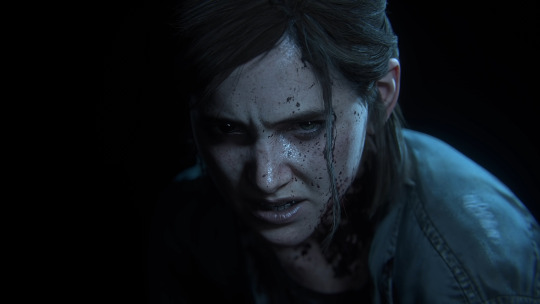

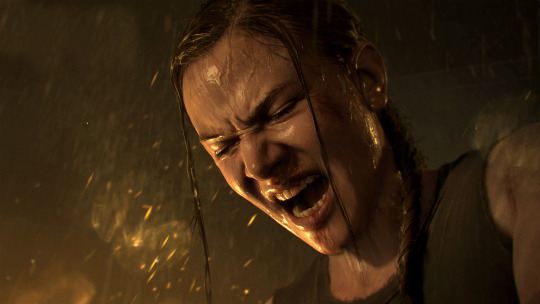

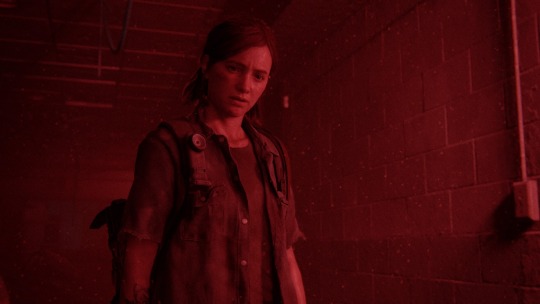

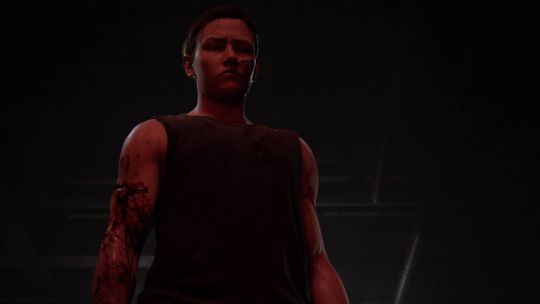

The Last of Us (2013) & The Last of Us Part II (2020)
Director(s): Neil Druckmann, Anthony Newman, Kurt Margenau
From the moment The Last of Us made its first appearance, it took the world by storm. To me, these heart-wrenching, story-driven video games focus on the human condition: love and hate. In the first, we find two individuals who have been pulled together in a twisted turn of events, beginning with the discovery of a deep-hidden secret. After love and loss came within grasp, the second finds these two characters torn apart by an unexpected tragedy. When looking back on these, it is easy to see that while love is the main theme of the first, hate is the central focus of the second. Joel, a broken man whose heart was (figuratively and literally) ripped from his hands, meets Ellie, a stubborn and head-strong young woman, and his world is forcefully turned around. In the next, when these two characters meet Abby, one of the strongest women I’ve ever seen depicted in media, all their lives are completely and utterly shattered. These characters wholly change the trajectory of each other’s lives for better and for worse. Oh yeah, and I forgot to mention: all these Earth shattering events occur during the “zombie” apocalypse.
Nothing compares to the feelings I endured playing through these titles for the first time. Seeing these beautifully written, well thought out, heart-breaking and heart-warming characters come together and fall apart will forever envelop a section of my brain. While my first interaction with the first was through YouTube walkthroughs, when I finally played it for myself in 2017, it was like seeing these characters for the first time. Actively engaging as these characters’ love grew for each other, offset by the desolate, ruined city in the background was an eye-opening experience. Never before had I experienced such a gut-wrenching story while playing a video game. As the story progresses, their love grows for each other and soon, Joel is like a “segregate father” for Ellie. This beautiful transition from total strangers who almost can’t stand to be around each other, to a father-daughter dynamic is something I’ve seen many times but never experienced in the scope of a video game. By the end of their journey, Joel is ready to burn everything down in order to ensure Ellie’s safety... and he does just that.
After the soul-changing adventure of the first, I could not have been more excited for the second. In this, the game shifts perspective; rather than seeing the events unfold from Joel’s view, we get to see Ellie’s. This game introduces Abby, the deuteragonist. Interestingly enough, she is also the “antagonist.” The same could be said for Ellie. Once again, this game managed to absolutely blow my mind by doing something I had never quite seen before. See, Ellie and Abby are both the protagonists of their own stories, with the other being the antagonist in their respective views. Needless to say, despite having a sort of hatred for Abby because of my well-founded love for Ellie, I also made a deep connection with her. Because of this, by the end of the game I had my heart ripped from my chest. Never before had I experienced such a depression after finishing any sort of media. Seeing these two apocalyptic-level feminine forces coming face to face caused an immense stress in my life, which was only furthered by my hands being the controller of the inevitable outcome.
Having to undergo this change in theme is another reason why this duology has a permanent place in my heart. Love and hate are the two most powerful emotions, in my opinion. Having to see these beloved characters finally come together, just to see their worlds annihilated, was obviously traumatizing. Even with the pain, the second entry is my absolute favourite. The writing, directing, and acting is unparalleled in quality. These games further proved to me that art is not one-dimensional. Their story-driven, heartfelt and personal narratives were something I only expected to encounter in literature and film. To me, it’s incredibly motivating, as an inspiring creative myself, to see other creators making such affecting and emotional media that exposes the most valued human emotion—love—and the flaws that come with the feeling.
—
Ellie: “To the edge of the universe and back. Endure and survive.”
2 notes
·
View notes
Text
quantic dream is a weird case because like the games should be amazing but they're NOT
looks good, sounds good, feels good, great voice acting (fuckin willem dafoe and elliot page and clancy brown are all excellent VAs), replayable, and the writing in all the side bits are honestly great, and everyone did a great job with them as far as digital entertainment
like until dawn and the walking dead season 1 and life is strange, it's not really "traditional" controls, there is no real game over, each game runs from beginning to end regardless of the choices you make, QTEs and exploration and puzzles and moral choices are the extent of the gameplay.
but the difference is that UD & TWD & LIS had good writers and david cage is a complete hack (and kind of a misogynist and kiiiind of a racist)
I could go into the flaws of heavy rain, omikron, indigo prophecy, beyond two souls, but I think I'd rather go into detroit becoming human.
so like. "it's not a racial allegory", right? except literally at the start of the game you're a white cop and a black servant and a female servant. the black guy is treated badly by a crowd of white people, then he gets on the segregated back of the bus where he is forced to stand up, then he's on the run from the police (and dies), then he either a) runs a pacifist resistance and sacrificing himself or b) sets fire to everything, "we have a dream" and ✊🏾 are literal choices he can make, there is a million man march, you literally have the magical ability to Press X To Liberate (where he forces the robots to go from blindly following the orders of their masters to, uh, blindly following the orders of a new master oh no yikes), and hey at least it evaded tokens because there's another black guy and... oh no he's a 'magical negro' stereotype who can and will be fridged at any moment to give Pain to the white girl. oh and the underground railroad lady LMAO. and all this blatant black civil rights activism allegory is happening to... sigh. robots.
now look, I am really heavily into the philosophy of theoretical transhumanism. star trek, mass effect, deus ex, even bethesda fallout [much as I fucking hate many aspects of fallout 3/4, I do really like the synths angle as it adds layers of intrigue and grey morality to an otherwise quite absurdly black and white system] are some of my favorite universes partly because of that. data/doctor/7of9, legion & EDI, adam jensen, nick valentine, they're all some of my favorite characters in those series. it's probably partly because as an autistic person I understand and empathize with them much more than I do the non-robot characters (and so much more than the "autistic" characters written by allistics :/ ). protag!connor is a cinnamon roll (because he says fuck the police in the third act, since the only good cop is a dead former cop... but also because I do like his character and the way he was portrayed by the actor and his contrast to hank who is the best character voiced by an actor I love, and connorXhank is the only part of DBH that I like as far as the writing goes). I should have loved detroit as much as I love the movie I, Robot. [btw if you like detroit watch it]
and yet
the problem is that it should have tried to just stay in its own lane and deal purely with the transhumanism angle, and not tried to also be racially woke. it is tasteless and blatantly racist for white people (especially the, ugh, french) to directly compare any nonblack protected class to black people in a work of fiction. my fellow autistics, my fellow queers, jews probably but I'm not even gonna touch that, and androids. all of the experiences are wildly different from the black experience especially in the US and it is not our place to compare ANY demographic in such an on-the-nose fashion. oh and don't even get me fucking STARTED on the goddamn HOLOCAUST IMAGERY AT THE ENDING. OH YEAH THE ROBOTS ARE GETTING PUT INTO CONCENTRATION CAMPS AND THEN INTO AN INCINERATOR, THAT'S TOTALLY NOT JUST AN ANALOGUE TO JEWS OR ANYTHING HA HA FUCK YOU DAVID CAGE alright that's enough.
oh and kara's story is a completely useless and tacked-on experience that depends wholly on the effects of the other characters and a plot twist that kinda renders her entire story... just. completely fucking pointless. and also because david cage loves short haired girls in perilous distress of a sexual nature.
and the cherry on top of the shit sundae is that the entire android deviants aspect is a planned obsolescence ploy by the corporations. it was programmed for the androids to have free will so it makes the old models go all murderhappy and incentivizes the people to trade in their old malfunctioning iphones for brand new sleek & shiny new ones. it was just social commentary on apple's shady business practices that also disguised itself as social commentary on post-slavery america that disguised itself as social commentary on transhumanism. and that's all his fucking games are is several layers of social commentary stacked together in a trench coat like bojack's vincent adultman pretending to be a cohesive story.
& you know how I know it's social commentary?
BECAUSE THE FUCKING GAME IS ALSO ABOUT DRUG ADDICTION
oh did you forget about that part? yeah, it's because it was handled poorly and it didn't matter and only served to get woke points.
D:BH is just a mess from a purely conceptual standpoint, and that's why it's fucking horrible.
but
but
but
if you like it then that's fine because quantic dream are a fantastic studio that produce just *chef's kiss* sublime work, given what they were working with. I put it on the same level that I put the twilight and harry potter films, because they took steaming piles of shit and made them sparkle.
...g... get it? because... because the vampires... they sparkle. that's the joke ignore me
I'm not gonna treat you badly if you like the game because I like parts of it but please please acknowledge that it's a downright mess
19 notes
·
View notes
Text

Bengal Renaissance:
The idea of renaissance caters the concept of a glorious past, a history of deterioration in the intermediate period and a journey towards the restoration of the lost glory through various means of societal foundations and fields. The word ‘renaissance’ holds the literal meaning of rebirth or reawakening. The line of thought started gaining popularity in Bengal prominently in 19th century, though the distribution was unequal. The literatures of that time entertained the idea thoroughly though the absence of equality in the distribution created a target audience who resembled nothing more than an echo chamber. The concept of renaissance or reawakening was mostly pushed by the upper class, upper caste men of the society, often writers. India never had its own history to be precise. The model was launched by the British writers. They had divided their own in the column of ‘ancient,’ ‘middle,’ ‘modern,’ and tried to use the own template which writing the history of India. Hence the idea of ‘middle age as the dark era’ was subjective. To the east Asia, this time was a reminder of golden hours while in the European context, this time was a throwback to the chaotic hours, when the British started to decide the history of India, it used its usual font of depicting the Muslim countries as the invaders and the Muslim population as the ‘others.’ It was these writers, these gatekeepers of cultural virtues, who made their work easier, for the texts these writers wrote, propagated the idea of the ‘foreign savior.’ Since the Europeans were on the losing side of the wars which is evident from their depiction of their description of the era, the wars took place in, they adopted the path of willful amnesia. Willful amnesia or a self-initiated effort to internalize the idea of forgetting, as a defense mechanism made them to label the ages of religious wars as ‘dark’ and writing their history accordingly. When the same procedure was used on the Indian history, the idea was taken up by the writers with immense socio-economic privilege, to write about the restoration of the glorious past of the country, that is the ‘Hindu’ era, before it was invaded by the Muslims and tried to build up a cultural resistance that way. This created the ‘otherization’ on a prominent level and the race who held the roots of this system of segregation, i,e the Europeans, acted out their process of colonization as the foreign saviors. As the process got initiated without any major violent face-off and as they posing as mere traders went successful, in no time they were able to establish themselves as a trustworthy assistant in thwarting the rule of the ‘Muslim invaders.’
‘Anandamath’ penned down by Bankimchandra Chattyopadhyay displays the characteristics of a 19th century novel, as discussed before. The influence of Sanskrit in Bankim’s life isn’t unknown. From learning the Sanskritic tradition and remaining in the contact of the scholars of Bhatpara to reviewing Sanskritic publications in ‘Bangadarshan’ and referring Sanskritic notions in his writings including ‘Anandamath’ are examples of how he valued the traditional ways of life and how strong was his urge to restore the ‘lost Hindu glory.’ ‘Anandamath’ becomes the perfect reflection of that. The novel keeps the famine background during Mir Jafar’s rule which was a cunning motive by the novelist to portray a situation of anarchy during the Muslim rule, thereby suggesting that a foreigner can only loot from the land and can never do any good for the countrymen and are only here to destroy the cultural heritage. “Mir Jafar took opium and slept, the British took in the money and issued receipts, and Bengal wept and went to ruin.” With clarity, the sentence exempts the British from the guilt of torturing the common folks in collecting revenues and places the entire responsibility of the well being of the Bengalis on the Muslim ruler to support the claim of ‘foreign saviors’ in a very subtle way. The support for the British Raj in India is expressed more clearly in the novel when the character known as ‘sage’ is having a conversation with Satyananda of Santan Dal’ regarding the outward and inward knowledge of Hinduism and says, “we must bring in the outward knowledge from another country. The English are very knowledgeable in the outward knowledge, and they’re very good at instructing people. Therefore we’ll make them king.” So the whole concept of making Bengal a Hindu state from the clutches of a Muslim ruler through the hands of ‘foreign saviors’ becomes evident in the narration. The ‘Santan Dal’ present in the novel carries out the Hindutwa agenda by attacking Muslim households, burning villages with Muslim population, attracting people by their Hindu identity and always expressed their agenda being the freeing of motherland, restoring her lost glory from the ‘foreign’ hands but the subjects of alienation were not the British but the Muslims. It becomes clear from Bhabananda’s comment, “the English are not our enemies. But why are you here to help the Muslims?” He even adds later, “Victory to the English! We wish you well!” Thus the legitimization of the colonization gets propagated through a fictious adaptation of the Sanyasi Rebellion but not against the white-skinned foreigners. The Sepoy Mutiny against the British, therefore never had any support from these upper caste, upper class Hindu men.
As mentioned before, the ideas of this so called new awakening weren’t distributed in the equal basis. The literatures concerned with the rebirth of the Bengali Hindu culture were targeted towards the upper middle class, middle class audience by the writers who had huge amount of social capital as their backup. The targeted audience had the leisure to indulge into the cultural activities due to their class position. The middle class Bengali young rebels were so influenced by ‘Anandamath’ that there was a rumor of them getting radicalized enough to keep revolvers in their bags along with the copy of this book. The novel though starts with the accounts of people suffering from the high taxes, famine, epidemic, hunger, are starving to pay the taxes, selling the family members and Bhabananda telling Mahendra that a king who doesn’t look after his subjects shouldn’t have any right to ask taxes, after the Santan Dal have taken charge of a village Satyananda advises them to collect taxes, but this time, for the cause of buying weapons to face the royal army and make the motherland free by establishing the Hindu rule and restoring the ‘lost glory.’ The economic deterioration is presented to evoke purgatory responses from the readership from their positions of privilege. The novel though is subtle on its caste angle but not enough to be considered nil. The memberships of Santan Dal happen after the interested ones reveal their caste. Even the child of Mahendra and Kalyani doesn’t get spared of this question. Though Satyananda says that every Santan should think of the other as equal as all are ‘The Children’ of the Mother, the protagonists are all from the privileged section of the society. Hence, the class of the targeted audience who only get concerned with the society when the ‘culture’ gets attacked as the other aspects of life were in abundance for them, what is better than a Hindu revivalist novel where the writer can make up an attack on culture and manipulate it for his own needs?
Preaching for colonization in the garb of Hindutwa propaganda isn’t an easy task but Bankim managed it quite well. The idea of the ‘Mother’ figure and her Hindu sons fighting the Muslim ‘foreigners’ yet welcoming the ones with white skin can only be done if the former idea propagates the concept of Sanskritization and the latter gets managed with a vague concept of outward and inward projections of the Eternal code and the outward expression being lost and can be revived by the help of the British people. The concept of willful amnesia and the notions of pre-conceived theory sit here well. The former directs the author into preaching that the antagonist in his writings has nothing good to do and is here to ruin things during his reign. The latter helps in the plot, and tells the writer to think that the ‘foreign savior’ can be used to revive the lost culture as they have ‘advanced’ ideas about things and can be used to undo the effects of the ruins made by the antagonist. Self contradiction is also a feature of the novels of 19th century. Hence, when Satyananda laments that he couldn’t establish the Hindu rule and the British will now rule by saying, “Oh Mother, I’ve not been able to set you free. Once more you’ll fall into the hands of unworthy foreigners,” the sage, a personification of the said feature advises him that ‘this’ foreigner’s help is needed to serve the bigger goal.
The novel, ‘Anandamath’ serves its purpose well. It mocks the strength of the sepoys by comparing it to those of the British ones, to glorify the foreigners the author has chosen to aid. The fight takes place among the Santans and the British too but the latter don’t bear the grudge as the author felt they would be needed to serve the politics of the revival of lost cultural glory. Though it fails to establish the Hindu rule, the win against British soldiers do serve as a trailer to project the might of the Hindus before the Muslim rule and a small hint that one day this community will ‘take back’ the country from the Englishmen and establish its own rule.
#studyabroad#study hard#study aesthetic#study blog#studystudystudy#studyblr#study tips#study notes#study#study motivation#study space#studying#student#study inspiration#studyinspo#studylustre#studyspiration#studyspo#art study#assignment#creative writing#my writing#writing#writing prompt#writing inspiration#content writing#content creation#renaissance aesthetic#renaissance architecture#studygram
6 notes
·
View notes
Text
Dumbo at 34
A review by Adam D. Jaspering
We remember things as we want to remember them. Memories distort perception and perception distorts reality. Childhood is especially remembered well. If not the entire childhood, elements. People romanticize memories from the feelings they evoke, and discard the reality.
The circus is a prime example. The circus was once a staple of American pleasure. It brought entertainment, excitement, and exotic animals to small towns across the US. In days before the internet, before TV, and before movies were mainstream, it was a necessity.
People remember the old-timey charm, the whimsical environments and otherworldly aura. Nobody wants to remember the adverse working conditions, the high rate of injury, or the gross abuse of animals. Nobody remembers the smell of port-a-potties or the heaps of animal manure. People remember the calliopes and cotton candy.
It’s quite appropriate Dumbo takes place at a circus. Everybody remembers the movie fondly, but nobody seems to acknowledge its flaws. It’s heralded uncontested as a Disney masterpiece despite a number of problematic issues.
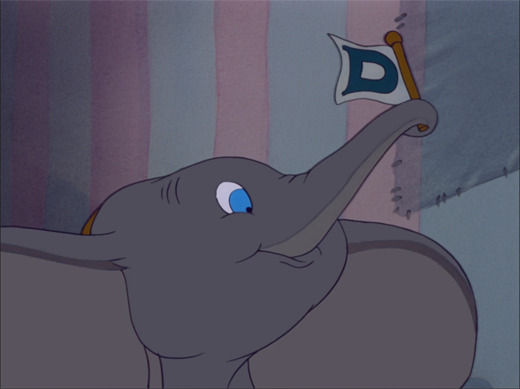
For starters, the film is only 64 minutes in length. This includes the opening credits. From a logistical standpoint, one can understand the purpose. Disney Studios took a financial hit from Pinocchio and Fantasia. They needed something not only profitable, but cheap. The same way that a three-wheeled car saves money on tires.
The story of Dumbo is one of growth and confidence when faced with adversity and doubt. However, the plot is about a young elephant finding an act in a circus. Dumbo tries, and he fails. He tries again, he fails again. Finally, he tries and he succeeds. An entire plot thread seems missing from the film. Dumbo learning to fly (both literally and figuratively) should support a larger narrative.
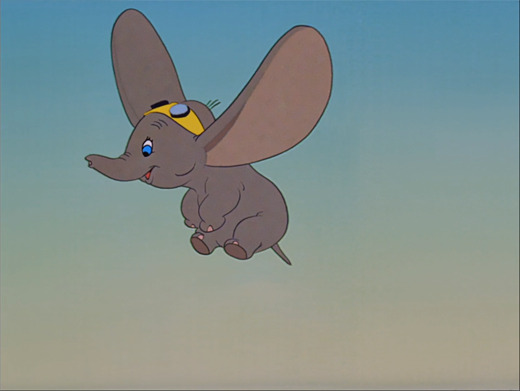
There are no stakes for Dumbo. His failures don’t affect the circus’s income or popularity. Dumbo is ostracized, but still cared for as well as any other animal in the show. He is ridiculed, but still performs every night.
The movie ends before any growth or change is displayed by the secondary characters. Everybody likes Dumbo once he can fly, but do they like him, or do they like his profitability and popularity? If a lion with an extra long tail is born, will he be mocked until he earns respect too?
Everybody in the circus feels comfortable calling him “Dumbo” at the movie’s end. Canonically, his official name is Jumbo Jr, named so by his mother. Everybody calls him Dumbo, a deliberate insult. The name sticks, even for the viewing audience. Either Dumbo begrudgingly accepts this epithet, or reclaims it. Either way, at least his mother should refuse it.
Dumbo’s mother is Mrs Jumbo, a pariah and outcast among the other circus elephants. What causes this exclusion is never explained or hinted at. The other elephants are just jerks. She has no friends, no confidantes, and is apparently widowed; there is never a mention or allusion of a Mr Jumbo. She has nobody in her life. This is presumably why she is so desperate to become a mother at the movie’s inception.
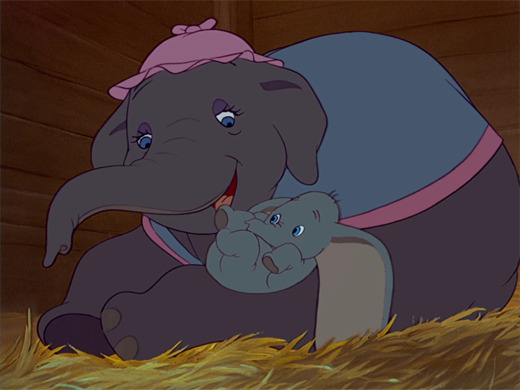
The film begins with a muster of storks delivering babies to various circus animals. It’s a cartoon staple and a very convenient workaround, explaining the miracle of a baby without the depiction of childbirth or implications of procreation. It also justifies how Dumbo is born despite there being no male elephants anywhere in the circus.
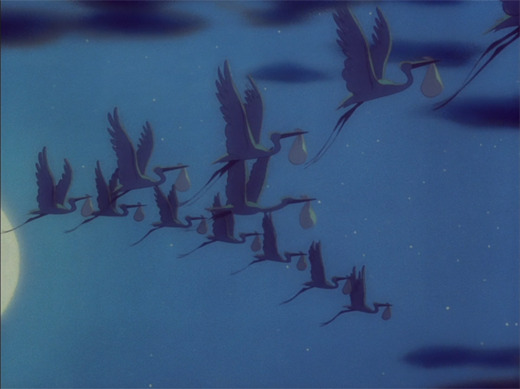
For whatever reason, these storks all deliver their parcels on the same night. All except for Mrs Jumbo’s coveted baby elephant. Baby Dumbo is delivered the following day. After seeing everyone else enjoying their children. After her hopes are dashed. There’s no explanation why the stork arrives late, well after the circus is dismantled and loaded aboard a train. Dumbo is delivered a day late for the sake of drama.
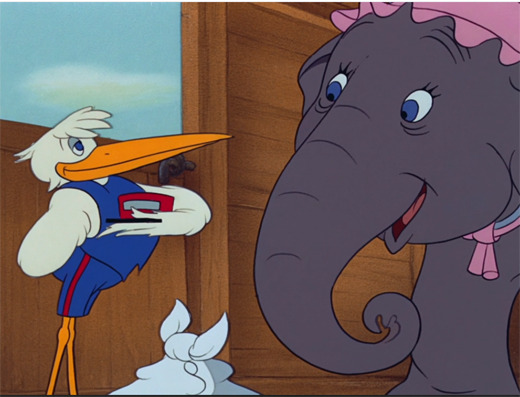
The train itself is almost a character itself. It has a name: Casey Jr. It has a face. It emotes. It speaks. But can he be rightfully called a character? Casey Jr doesn’t interact with other characters. He has no goals or desires besides acting and moving like an ordinary train. It’s an odd design choice, leaving Casey Jr halfway between being a robot and the pathetic fallacy.
Casey Jr is an interpretation of the famed children’s story, The Little Engine That Could. Casey Jr even uses the famous line, “I think I can, I think I can” as he climbs a hill. The story’s most famous interpretation was a 1930s picture book by Watty Piper (a name one could only have in the 1930s). The character and story itself belongs to the public domain.
It wouldn’t surprise me if somebody at Disney Studios tried and failed to make an animated short based on the story. As consolation, they retrofitted the character for a bit part in an unrelated, developing film. The cumbersomely named 'Little Engine That Could' was renamed ‘Casey Jr,’ and a new character is added to Dumbo's universe. A character Dumbo never meets or interacts with, and has no bearing on the plot. If nothing else, he adds five minutes to Dumbo’s anemic runtime.
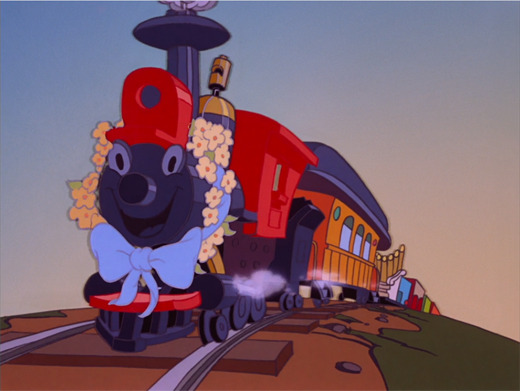
Design is one of Dumbo’s weakest points. Human characters are hyper-stylized caricatures of actual people. Perhaps intentionally, so we empathize more with the comparatively realistic animals. But the animators went too far. The Ringmaster is so rotund, he seems inflated. The clowns have bizarre proportions which are somehow reigned in by their baggy costumes and floppy shoes. The rowdy child who assaults Dumbo looks more like a chimpanzee than a boy.
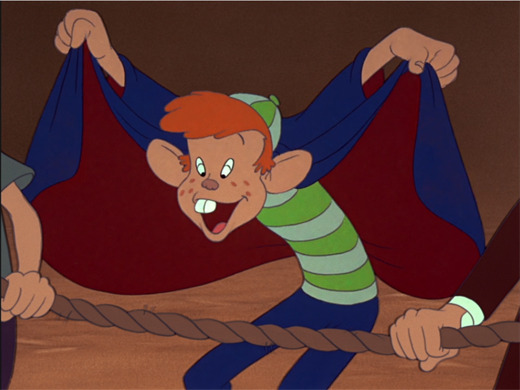
The character of Timothy Q Mouse is perplexing. Is he employed by the circus, or just a circus enthusiast who hangs around the fairgrounds after hours? What would a circus gain from hiring a mouse? Why does he dress like a bandleader? Does this imply an unseen mouse marching band? He never displays any musical ability. He’s there because the movie needs him to be there.
Being Dumbo’s sole friend is Timothy’s secondary purpose. His primary purpose is to outwardly verbalize the thoughts and emotions of Dumbo. Our protagonist is mute throughout the film and most characters avoid talking to Dumbo directly. Without Timothy, Dumbo would stare at camera sadly for the movie’s run.
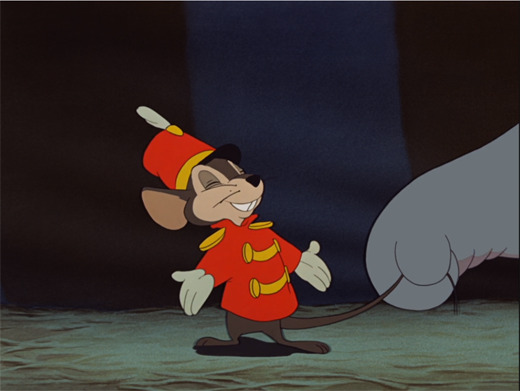
The circus folk themselves are weird, and not just their physical attributes. The Ringmaster is a bombastic Italian man who, as Timothy describes, “never had an idea in his life.” He seems genuine, eager to entertain his audience with an entertaining and original show. His real malice is never workshopping ideas. He will not hesitate to endanger the lives of his employees or animals on his fanciful whims.
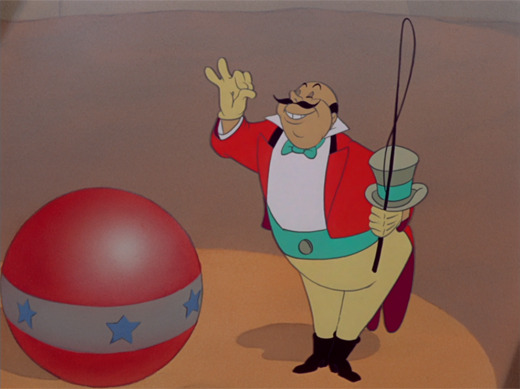
Can six full-grown elephants balance on a rubber ball? Who knows. Let’s put it in the show. Is it safe to have a baby elephant drop twenty feet into a washtub full of shaving cream? We’ll find out. Is it a good idea to start a fire underneath a canvas tent for the sake of a firefighter sketch? The audience likes it, so who cares? Go stand next to the fire, clowns.
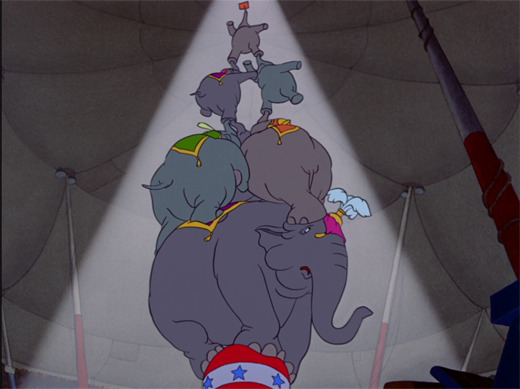
There’s an old adage about doing anything for a laugh, but the clowns from Dumbo take it to a sociopathic extreme. The clowns develop an entire act around humiliating Dumbo. When the skit is a success, they drunkenly decide to put Dumbo in more humiliating situations and more precarious stunts.
It’s implied the clowns are the low men in the circus’s caste; those who cannot perform elsewhere are subjected to the humiliation of clowndom. Does the scorn beget the malice, or did the malice beget the scorn?
Perhaps this is why the clowns are never shown as actual humans. Throughout the movie, they either appear in their grotesque, make-up clad personas, or in various states of undress as silhouettes inside a circus tent. At all times, they are either 100% clown or some spectral figure. They are never seen as human, because there is certainly no humanity to them.
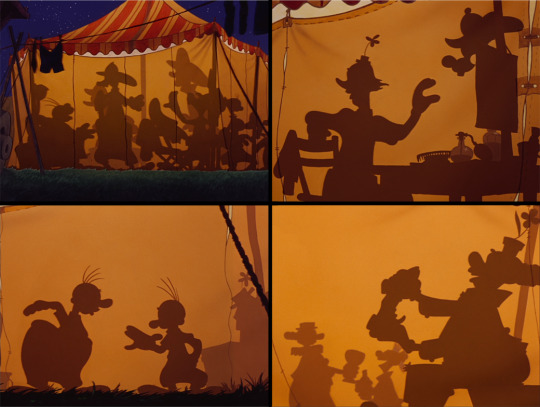
However, the most questionable employees are the laborers. The laborers are not entertainers; they have no face time with any circus patrons. And yet, they are the most important employees of the circus. They are responsible for unloading the train and erecting the many circus structures.
These laborers, tasked with the most arduous and backbreaking of work, are all large black men. As a stylistic choice, they are all depicted faceless. Not even worthy of dignity, they are robbed of any identity and distinguishing characteristics beyond skin color.
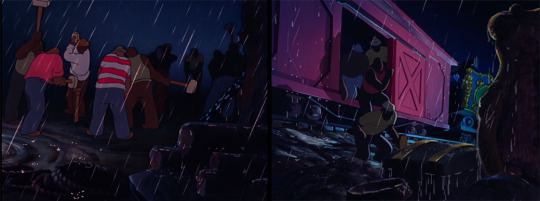
To cushion our objections, the laborers sing about how much they like the work. The song is no comfort. They sing about being illiterate. They sing about being underpaid, and routinely subject to wage theft. They sing about how its their very nature to be irresponsible with money. They literally use the word “slave,” and “ape” to describe their circumstances. Thank you, 1940s.
The only other black characters are a murder of crows introduced in act three. These crows must be less racist in depiction and demeanor than the laborers, right? They couldn't possibly be worse, right? Then one learns the leader of the avian posse was named “Jim Crow” on all Disney material until the 1960s.
The entire Civil Rights Movement needed to happen, but somebody eventually realized a children’s cartoon character named after the most provocative blackface character in history, the namesake of the American laws that enforced segregation, was a bad idea. It didn’t help Jim was voiced by a white actor. Cliff Edwards voiced Jim Crow (later renamed Dandy Crow), the same actor also voiced Jiminy Cricket in Pinocchio. Jiminy Cricket has appeared regularly as a beloved figure in Disney merchandise and material. Dandy Crow has not.
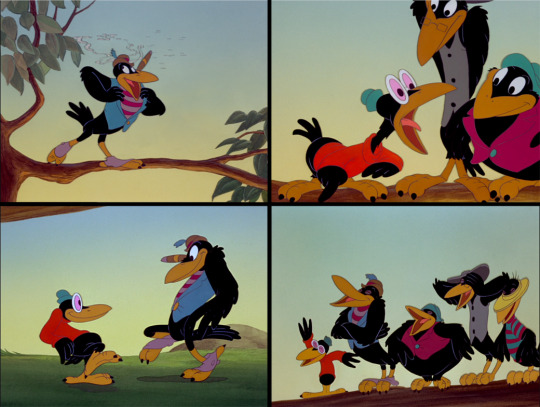
To Disney’s credit, the other crows were voiced by actual black actors. Although, one has to wonder if the AAVE was written into the screenplay, or if the director asked the actors to create it on the spot. There’s no good answer.
The crows’ musical number was performed by the all-black Hall Johnson Choir (with the exception of Edwards’s vocals). Their number, When I See an Elephant Fly, is one of the better pieces of music in the Disney catalog. It's full of jazz scatting and clever wordplay. It’s a shame its existence is marred by its racially charged source.
How an oversized pair of ears grants the ability to fly is not important. It’s a cartoon. The ears are a means to an end: the physical feature that made Dumbo a laughingstock also granted him a most unique ability. Differences make us strong. It’s a good moral (even if the film is hypocritical).
The depiction of the moral’s resolution, however, raises eyebrows. Upon discovering he has the ability to fly, Dumbo seizes the opportunity to take revenge on those who wronged him. He circles around the big top, swooping at the ringmaster, scaring the clowns, shooting peanuts at the other elephants like bullets from a machine gun. ‘Make your enemies pay,’ is the takeaway. Suffer all, enemies of Dumbo.
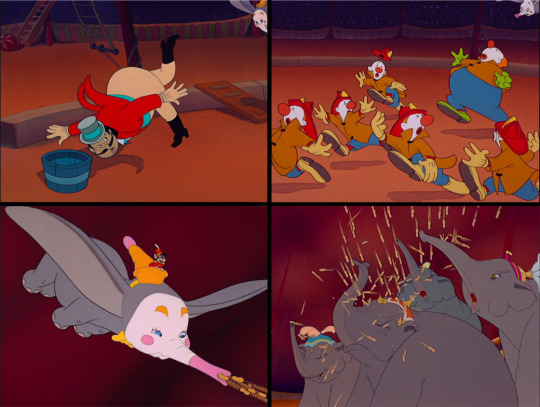
Some may argue Dumbo’s character arc is not redemption for himself, but for his mother. Mrs Jumbo spanks a young boy who assaults her infant son. The circus folk misinterpret this act as a rampage. She’s is subsequently shackled and imprisoned for the forseeable future.
Even after being deemed hazardous and mad, Mrs Jumbo is never sent away. There is no indication of punishment beyond isolation (why the circus keeps a dangerous rampaging elephant on circus grounds is a creative liberty). The true punishment is being separated from her son.
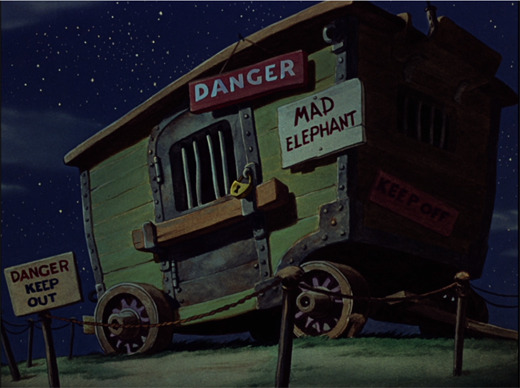
The movie ends with Dumbo as the star of the show. Everyone sings his praises, he has his own personal train car, and Mrs Jumbo is freed. The question is, why is Mrs Jumbo freed? Just because Dumbo is beloved, why is Mrs Jumbo’s perception as a threat forgotten? Why is she forgiven because her son is popular? Dumbo cannot speak, how can he serve as a character witness? Why does Dumbo's achievement redeem his mother's actions? The writers delivered a happy ending by solving a problem that was never actually solved.
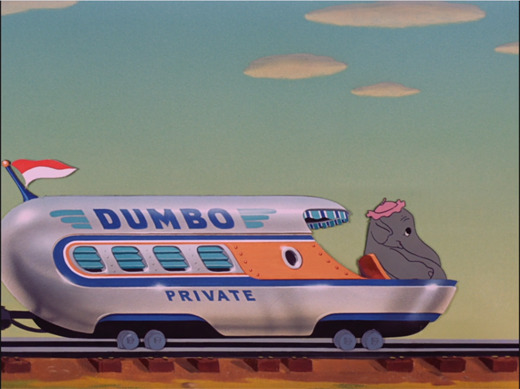
Dumbo is a film full of illogical scenes and developments. It's grandfathered into the cultural pantheon despite outdated imagery and storytelling. It has good intentions, utilizing themes of overcoming adversity, the endurance of familial love, and appreciating each other's differences. But these good intentions are drowned in too many narrative shortcuts and a sloppy execution. It’s a pleasant movie the less you remember, and most people’s memories are hazy. What’s more appropriate from a film whose most famous scene is a surreal drunken musical hallucination?
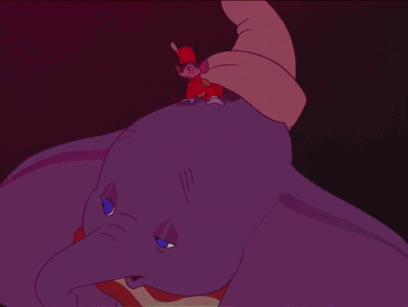
Fantasia Snow White and the Seven Dwarfs Pinocchio Dumbo
#Dumbo#Disney#walt disney#Walt Disney Animation Studios#Film Criticism#film analysis#review#Disney Canon
9 notes
·
View notes
Text
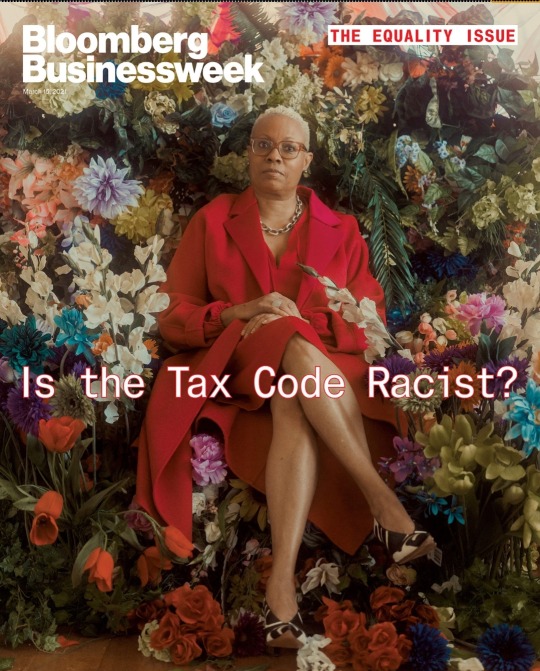
Last summer, after the killing of George Floyd ignited protests around the country, Brown got more calls from reporters than she’d received in her entire career. By the time President Biden promised, on his first day in office, to identify and dismantle systemic racism perpetuated by all federal departments, staffers on Capitol Hill were already consulting Brown about the Internal Revenue Service’s impact on racial disparities. “Suddenly people wanted to talk about race and tax,” she says.
With The Whiteness of Wealth, Brown has turned a notoriously boring topic into a surprisingly accessible and lively 288-page book, relying on examples from real families, including her own, to guide readers through the intricacies of a tax code provisioned for just about every milestone in a person’s life—education, marriage, homeownership, childbearing, death and inheritance. Generations of lawmakers have optimized the system for White people, she argues, with the result that in the U.S.’s supposedly progressive and race-neutral tax code, Black people end up paying more than White people with the same incomes.
The challenge for Brown’s research has been all the greater because the IRS doesn’t take race into account when it analyzes its giant trove of tax data. So she had to laboriously stitch together information from dozens of other sources to prove her book’s thesis. The best evidence that the system is unfair to Black people is the sheer size and persistence of the racial wealth gap. The median White family has a net worth eight times the typical Black family’s wealth. According to Federal Reserve figures, that’s the same size gap as in 1983, despite higher incomes, educational gains, and extraordinary progress by individual Black people, including to the highest office in the land.
The book also serves as something of a primer on how wealth works in America, showing how the rich pass assets to their children and why those starting from the bottom face such a difficult climb. Brown devotes her final chapter to advice for Black readers trying to navigate a system that disadvantages them at every turn. “Black Americans need to be defensive players,” she writes, “choosing strategies in their educations, careers, and family lives that compensate for oppressive practices and policies.” She also pushes for major tax changes to erase biases toward Whites and to assist all people, especially Black ones, who are trying to build wealth. Never again should politicians discuss tax reform without considering race, she says. “I literally want to change how America talks about tax policy.”
One afternoon in the early ’90s, Brown pulled out an essay she’d been looking forward to reading by her friend and mentor Jerome Culp, the first professor of color to receive tenure at Duke University’s law school. She’d been feeling isolated at her first academic job, with White colleagues who she says seemed clueless about race, at best. And here was Culp arguing that race should no longer be overlooked in important areas of the law. “There may be an income tax problem that would benefit from being viewed in a Black perspective,” he wrote by way of example, “but until you look, how will anyone know?” Brown called Culp and promised to try.
It took several years for her to publish her first research on the question, focusing on the taxation of married couples. Black Americans are more likely to be single, and if they’re married, it’s more likely both spouses will be working. These considerations wouldn’t have mattered when the income tax made its debut in 1913, because all earners were treated the same regardless of marital status. But in 1930 a rich White shipbuilder named Henry Seaborn persuaded the U.S. Supreme Court to lower his tax bill by imputing half his income to his wife. Congress eventually went along, and ever since, couples with only one high earner have paid less. Brown realized this policy had meant higher tax bills for her parents: The tax code essentially treats a plumber and a nurse who are paying for child care and commuting expenses with after-tax dollars the same or worse than it does a banker earning their combined salaries whose spouse stays home with the kids.
In the next 20 years, Brown went on to systematically catalog other ways in which, when Black families like her own tried to hoist themselves up the economic scale, the U.S. tax system pulled them down. Her colleagues, who were overwhelmingly White, expressed skepticism, however. “Dorothy, everybody knows your work is irrelevant, because Black people are poor and don’t pay taxes,” she says one professor told her, rudely laying bare an assumption she’s confronted countless times. (Four-fifths of Black households don’t fall below the poverty line.)
Brown’s father, James, with her nephew Jamaal in the early ’80s.
Brown’s early published work “caused her lots of professional grief,” recalls her friend Mechele Dickerson, a law professor at the University of Texas at Austin. “People thought you were just trying to be controversial—that you’re just making stuff up.” Those on the left asked if this was about class, not race. Conservatives posed a different question: Wouldn’t these disparities disappear if Black taxpayers just acted more like White ones?
Brown’s answer to both is that your class may change but your race can’t, no matter how differently you behave. “Blacks graduate from college with more debt, do not get jobs as easily as Whites, are not paid the same wages as their equally qualified White peers, are steered toward lower paying jobs, and have an unemployment rate twice that of Whites—yet are more likely to provide financial support for extended family,” she writes in her forthcoming book.
These present-day disparities are piled on top of a shameful history of Black Americans being purposely excluded from landmark federal legislation and programs. “For Whites, there were government interventions that created a middle class,” says New School economics professor Darrick Hamilton, an adviser to Senator Bernie Sanders’s 2020 presidential campaign who considers Brown a mentor. He points to the Homestead Act in the 19th century and much of the New Deal and the GI Bill in the 20th. “When Blacks were able to amass pockets of wealth, it’s been vulnerable to confiscation, theft, and terror,” he adds, citing the devastation wrought in Black neighborhoods by predatory subprime lenders as an example.
Brown argues that “tax policy adds insult to injury” by magnifying the financial toll of Blackness. The tax treatment of housing is a textbook case. Interest paid on mortgages is deductible, but there’s no comparable perk for renters, who are disproportionately Black. Also, White homeowners tend to pocket gains upon resale, which are largely tax-free. In contrast, Black homeowners are very likely to lose money on their investment, because homes don’t usually appreciate much in diverse neighborhoods that are shunned by White buyers. And losses aren’t tax-deductible.
Or consider tax incentives the federal government offers on 401(k)s and other types of retirement savings plans, which add up to more than a quarter trillion dollars per year, according to the Tax Policy Center. Only about half of U.S. workers have a retirement account, and they’re disproportionately White. Meanwhile, Black people are far more likely to have jobs that fail to provide 401(k)s and other corporate benefits, such as health care and flexible spending accounts, that are heavily subsidized by the tax code.
These discrepancies are nothing new—Brown’s father, locked out of the plumbing union for the first 20 years of his career, was employed by a small private company that offered no retirement or health-care plan. Now, though, the gap between different classes of workers might be widening, with the rise of the gig economy and corporations outsourcing more work to contractors. Brown is wary of the trend, seeing it as a “new form of occupational segregation” that’s ensnaring a disproportionate number of Black workers.
1 note
·
View note
Text
Thoughts on Blue Wraith #2, cut for spoilers:
I liked the undercut hairstyle of one of the unfortunate elves from the beginning
Nenealeus has a great design. Cool armor. villainous, imposing
Fenris’ face in that one panel during the Francesca fight lol
The fight between Francesca and Fenris was really good and good to see in real unfuzzy detail (obviously, since it wasn’t a preview). Fenris is so agile and scary! loved it when he chopped up that vine like cucumber salad
Interesting how they chose to incorporate the three dots on the forehead Fenris had in some concept art into his redesign for the comic. fanon preference has ascended once again
everythinggg VAEA. she is so brave and sweet and growing and coming into her own so much
the way Autumn was both protecting Francesca but also holding her staff in her teeth to stop her attacking!! Autumn Best Girl. Autumn in general is really well done actually. so emotive and expressive, so much character for an animal. her lil smile when she realizes Vaea is on the other side of the door ;;
Fenris’ dialogue was on point and well-done. I could hear his lines in my head. they really nailed down his ‘voice’ and his wry wit
Fran is rly growing on me. This is an achievement since she’s a vint. her upturned nose is so cute btw
It’s so good to see some insight into the way Fenris’ powers work, see another example, like when Vaea and doggo got knocked back by the magical blast but Fenris was unaffected, Vaea phasing right thru him. in the games it was a bit wishy-washy and u wondered how much was gameplay/story segregation (Skill Tree stuff). and, so it’s not always voluntary and under his control!
reinforcement of plant magic being v rare outside of Dalish clans lore
when Vaea and Fenris talked about Varric I felt warm. look at Fenris’ fond smile thinkin of his old friend
Fenris is a tracker and he can ride now, not things he would have known how to do in his former life as a slave
SHFUHRFJHJ Fenris/Autumn panel
“I do not have teammates or partners any longer they left people use u” :’( noooo. this makes me feel very sad. ofc its the limits of the comic medium and I totally understand, but in my worldverse I see my Hawke accompanying him on this adventure
lolo ‘all elves look alike to Pascalis’ snipe and Marius doesn’t talk how on the nose lolo
<3 Fenris huffy nose crinkle “Why investigate when we can fight?” literally “>: [”
SHIRALLAS HAIRSTYLE CHANGE. thats Dramatic and means Things happened. that look was so intense. I’m on tenterhooks waiting for more Shirallas and what’s gonna happen in the end for him in the next issue. I am so worried for my boy, its not looking good
the elven slaves from the estate =(
also CASSE>>>>>>>>>>>>>>>>>> NOOO
omg the sarcophagus revelation ohh shiiiiiit ooooo fuqqq so thats the ritual/process which gave Fenris his markings!!
Tessa has a crossbow? Am I misremembering something? edit: huh! shows you what I remember about Tessa and Marius (sorry Tessa and Marius)
maybe the real Blue Wraith.. was the human lyrium ghost experiment we fought on the way to follow the caravan all along ;P
so, I wonder why does the sarcophagus have a different effect on a human compared to an elf. something to do with elf physiology and their apparent connection to magic/the Fade I presume
the 4-way split lyrium explosion panel: amazing!! what a way to end it
overall really good, really pleased with it, great art and writing both as usual, and so much char development and funny/sweet/dramatic moments packed into only a few pages AND new plot/lore revelations. great!!!!
#dragon age#bioware#fenris#the fenaissance#video games#spoilers#spoiler#blue wraith spoilers#blue wraith spoiler#blue wraith#blue wraith 2#blue wraith 2 spoilers#blue wraith 2 spoiler#dragon age: blue wraith spoilers#dragon age: blue wraith#dragon age: blue wraith spoiler#dragon age: blue wraith 2 spoilers#dragon age: blue wraith 2 spoiler#logan hawke#lul#feels
17 notes
·
View notes
Text
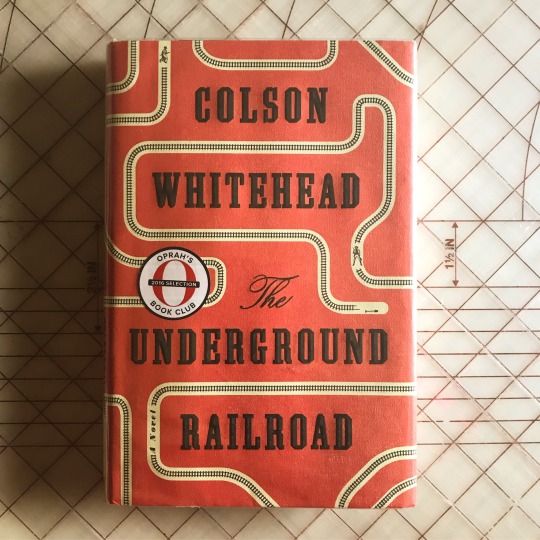
#finishedbooks The Underground Railroad by Colson Whitehead. This is often compared to Coates' The Water Dancer since both are relatively new novels that deal with the underground railroad. However, this is decidedly much more realistic and grim in describing the atrocities of slavery and the effects amongst the slaves themselves. I mentioned Coates novel would make a great film...this would not as imagining the violence is more than enough. But in general the aims and tones are diametrically opposed and as time moves forward won't really be compared to each other. With that, the story centers on Cora a slave on a cotton plantation in Georgia. She is an outcast even amongst her fellow slaves and decides to try to escape with a recently arrived slaved Caesar who has an understanding of the underground railroad. Before reaching it they are caught by some boar hunters and she kills a boy among them in their escape. With that and I think much of the books uneven criticism comes here. I took it to be a metaphor as they literally ride trains from state to state that becomes a Gulliver's Travels of sorts where each chapter is a state and in between chapter a character study of someone they encounter in it. What he does is have each southern state metaphor a sort of atrocity in American history. The first stop South Carolina has set up a free town of ex-slaves purchased by the government that plays out like the Tuskegee experiment obviously a century before it and its basis in eugenics. There is a rather genius metaphor in this in which she takes a job as a living stand in at the natural history musuem as an actual slave for the exhbit. It is done in three parts: the capture in Africa, the ship ride, and plantation life...she requests to work her shift backwards so she ends each day with a return to Africa. But the plasticity of this reinforces the metaphors that I have noticed white critics not only miss but simply say but that didn't happen in the 1800s and it is overdramatized. In North Carolina she comes across the ironically named freedom trail that is strung with mutilated bodies of captured runaway slaves that extends for miles to deter runaways ... the real freedom trail is in Boston leading the traveler past hallowed Revolutionary sites something again I read some critics sneering at but the metaphor of the America built off the suffering of African Americans is adept following the logic in place. She is put up in an attic where she can see the townsquare from the holes. She sees white life from a distance kept away that featured menstral shows, appropriated renditions of black music, and yet another lynching yet made ritualistic. Again the critics, because lynching were spontaneous and events of mob mentality, but here it was all made into ritual as she hides in the attic for months metaphoring it to the Holocaust. The chapter read out with the claustrophobia of Anne Frank as the KKK visited the home for would be runaways. Tennessee proved to be a burnt out (wildfire) hell that was also going through a plague taking on biblical proportions as the specter of manifested destiny was discussed. Finally Indiana shows what would become of the Jim Crow south and more pointedly the massacre of Tulsa as although they were segregated, the were flourishing and that was brought to a violent end. A more literary read than The Water Dancer, it kind of does to the genre what Blood Meridian did to westerns, it goes into the nihilism of what it was destroying the American mythology.
1 note
·
View note
Text
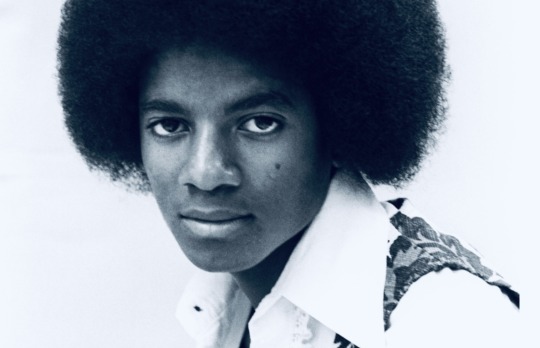


MICHAEL JACKSON, BLACK SUPERHERO: African-American Artists And Intelectuals, From Jay-Z To Henry Louis Gates, Weight In On Jackson’s Legacy.
“When Michael Jackson was a boy, you didn’t have to say “black is beautiful,” you just had to look at him and you knew. In 1969, as black people were getting comfortable with the idea that African features are gorgeous, he arrived as the perfect punctuation of that idea. He was cherubic with his rich brown skin, a broad nose and a big halo of curls atop his head at a time when the Afro was a powerful symbol of black pride. “People responded viscerally to Michael Jackson’s beauty,” says Harvard professor Henry Louis Gates Jr. 1969 was a year after the assassination of Dr. Martin Luther King Jr., a time when the black-power and civil rights movements seemed to be disintegrating, but Michael showed up, a soul-music prodigy irrepressibly optimistic and bursting with youthful enthusiasm. “Here was a child who clearly understood the R&B idiom,” says music-industry veteran Gary Harris. “He was some sort of test-tube creation from a mad soul doctor’s lab. If Diana Ross and Stevie Wonder had a child, it would have been Michael Jackson.”
He quickly became the number-one black child star of his era, and of all time. The first four Jackson 5 singles each topped Billboard‘s Hot 100, an unbelievable start. Black people fell in love so hard, he became more than an artist and more like a member of the family. You didn’t want anything to happen to him so much that you felt protective the way you did about a younger brother. “He was ours,” says Q-Tip. “He meant everything to black culture.”
It wasn’t just about Michael. A few years after the Johnson administration declared the black family broken with the Moynihan Report, the Jackson family was large, intact, vibrant, successful and seemingly happy, giving America an idealized image of domestic bliss. Jay-Z told me he grew up pretending to be Michael, singing alongside his two older sisters and brother. “Here you had Michael and four brothers,” says the Rev. Al Sharpton, “all talented and all cute and the strong father and the mother who was matriarchal and Janet, and it was like, ‘Wow, all this talent in this family, showing we could do something.’ We were proud of that.”
Michael had a second family: Motown was a deeply trusted brand in millions of black households. If Berry Gordy said it was good enough to release, you could bet it was great. The Jackson 5 were the last great act to come out of the Detroit label, further proof of Malcolm Gladwell’s theory in ‘Outliers: The Story of Success’, that life timing is critical to success, that the historical forces swirling around the moment when you emerge can make all the difference. “The Jacksons were the first family in line to truly benefit from the post-civil-rights era with America’s new open-arms policy toward black entertainment,” says ?uestlove. “1969 was the year the social floodgates opened and an 11-year-old led the charge in post-Malcolm/Martin/Motown America. Historians always forget the third-most-important M to help black America get access to the promised land is Motown
Thriller came out at the end of 1982, as the affirmative-action generation was beginning to make its move. Jesse Jackson would make a bid for the presidency, Eddie Murphy would launch his assault on the top layers of Hollywood, Oprah Winfrey would start her legendary talk show, and Bill Cosby would create the best-rated sitcom of the decade. Even before all that started, the vibe of black ascensionism was in the air, and Michael saw no reason why race should hold him back from the most elite level of his profession. He decided to ride his excellence to the zenith. Current Motown president Sylvia Rhone says, “Throughout his career, his success dramatically affected my view of what was possible and open for African-Americans.”
Many blacks now compare Michael with Barack Obama – perhaps the highest possible compliment in black America. Not only are they both integrationists and racial harmonists, but they both were determined to reach the top while refusing to let race hold them back. “There’s so many components of why Barack Obama is president,” says Diddy, “and Michael Jackson is one of them. He started a change in the perception of the African-American male on a worldwide level: his strength, always putting himself in a power position, being seen as a hero.” Sharpton echoes the point. “Way before Tiger Woods or Barack Obama, Michael made black people go pop-culture global,” he says. “You had people in France, South America and Iowa comfortable with their kids imitating a black kid from Gary, Indiana. And when some of those people in Iowa grew, they were comfortable with voting for Barack Obama because they got comfortable imitating a black kid named Michael Jackson when they were young. Obama is a phenomenon, but he’s the result of a process that Michael helped America graduate to.”
Michael was also a boardroom killer. In the decades before him, black recording artists were, as James Brown observed, in the show but not in show business. Many ended up losing the copyrights to their own songs and pocketing a fraction of the money their music brought in. Jackson knew all about that history. “He knew Berry Gordy made his money off copyrights,” cultural critic Nelson George says. “He knew the value of songs. That’s something he understood.” In 1984, when the ATV music-publishing catalog, which contained 251 Beatles songs, including “Yesterday,” “Let It Be” and “Hey Jude,” as well as work from Bob Dylan, went up for sale, Jackson went after it. After 10 months of negotiation, Jackson purchased the catalog for $47.5 million. His stake is now worth more than 10 times that, and the move was easily his shrewdest business conquest – and the asset that kept him afloat during his financially troubled last years. It proved his savvy, separating him from all those previous black artists who lacked the power to control the music business. But more than that, the symbolic power of Jackson owning the Beatles’ music cannot be overstated. Not only did he become as big as the Beatles, he bought them too. A century after American whites owned blacks, a black performer owned the product of the most elite white group in the world. It was an amazing turnabout, and one blacks took special pride in. A few nights after Jackson died, I was in L.A., searching the radio for an MJ song, when I came across “Strawberry Fields Forever” on an oldies station. I said, “Fuck it, Mike owns this. Same difference.” And I listened.
By the Nineties, Jackson no longer looked like a black person – after a series of surgeries, his facial features and skin color had become more and more Caucasoid. George says, “I don’t think there was any question: There was disquiet in the black community about the color thing. It was an issue. People didn’t wanna go out and say, ‘He’s fuckin’ becoming white,’ but people were like, ‘What’s that about?'” As Jackson was literally assimilating, we struggled with his choices but never symbolically tossed him out of the race, even though he seemed to be trying to surgically remove himself from it. “The reason black folk never turned their backs on him,” says Georgetown professor Michael Eric Dyson, “is because we realized he was merely acting out on his face what we collectively have been tempted to do in our souls: whitewash the memory and trace of our offending blackness.” Still, we struggled to understand why. Some have said he no longer wanted to see his father in the mirror, but there seem to be deeper forces at play. “I think he wanted to be a symbol of universalism,” Gates says, “and he erroneously thought his skin color, hair texture, the length of his nose and shape of his chin inhibited that. You could say he was appealing to the universal, but there’s no way of escaping, even giving him the benefit of the doubt, that it’s a function of Negro self-hatred and self-loathing, which is a function of slavery, Jim Crow, segregation and racism, which made blacks hate the very things that make them beautiful.”
Those who knew Jackson well say he wasn’t trying to surgically remove himself from the race. Producer Teddy Riley, who worked on Jackson’s Dangerous album, says, “Of course he loved being black. We’d be in sessions where we’d just vibe out and he’d say, ‘We are black, and we are the most talented people on the face of the Earth.’ I know this man loved his culture, he loved his race, he loved his people.” Questlove adds, “As a fellow child of a taskmaster, no one knows self-distorted insecurity like I do. A person ashamed of his roots would never have made a gazillion odes to Africa as he’s done.” And even as his face got whiter, his music stayed black and rooted in the R&B tradition he mastered as a kid.”
11 notes
·
View notes